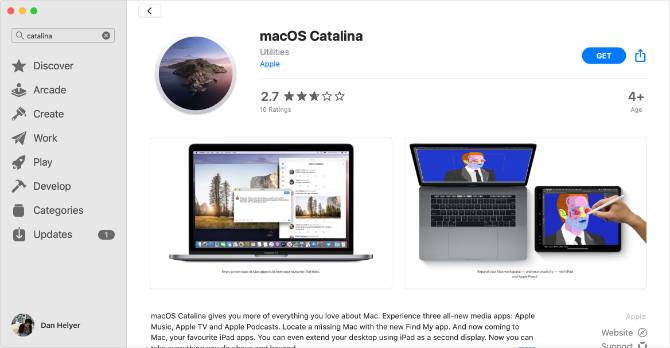- Second Chance Updated Mac Os Download
- Second Chance Updated Mac Os Catalina
- Second Chance Updated Mac Os X
- Is My Os Updated
- Latest Mac Os
From any Mac application that can print, select the print menu and choose Send to Kindle. Mac OS X 10.11 or later; Drag-and-drop files to Send to Kindle View larger image. Amazon Second Chance Pass it on, trade it in, give it a second life. 17 hours ago Apple today seeded the second betas of new iOS and iPadOS 14.6 updates to developers for testing purposes, one week after seeding the first iOS and iPadOS 14.6 updates.
To get the latest features and maintain the security, stability, compatibility, and performance of your Mac, it's important to keep your software up to date. Apple recommends that you always use the latest macOS that is compatible with your Mac.
Learn how to upgrade to macOS Big Sur, the latest version of macOS.
Check compatibility
If a macOS installer can't be used on your Mac, the installer will let you know. For example, it might say that it's too old to be opened on this version of macOS, or that your Mac doesn't have enough free storage space for the installation.
To confirm compatibility before downloading, check the minimum requirements for macOS Catalina, Mojave, High Sierra, Sierra, El Capitan, or Yosemite. You can also find compatibility information on the product-ID page for MacBook Pro, MacBook Air, MacBook, iMac, Mac mini, or Mac Pro.
Make a backup
Before installing, it’s a good idea to back up your Mac. Time Machine makes it simple, and other backup methods are also available. Learn how to back up your Mac.

Download macOS
It takes time to download and install macOS, so make sure that you're plugged into AC power and have a reliable internet connection.
Safari uses these links to find the old installers in the App Store. After downloading from the App Store, the installer opens automatically.
- macOS Catalina 10.15 can upgrade Mojave, High Sierra, Sierra, El Capitan, Yosemite, Mavericks
- macOS Mojave 10.14 can upgrade High Sierra, Sierra, El Capitan, Yosemite, Mavericks, Mountain Lion
- macOS High Sierra 10.13 can upgrade Sierra, El Capitan, Yosemite, Mavericks, Mountain Lion
Safari downloads the following older installers as a disk image named InstallOS.dmg or InstallMacOSX.dmg. Open the disk image, then open the .pkg installer inside the disk image. It installs an app named Install [Version Name]. Open that app from your Applications folder to begin installing the operating system.
- macOS Sierra 10.12 can upgrade El Capitan, Yosemite, Mavericks, Mountain Lion, or Lion
- OS X El Capitan 10.11 can upgrade Yosemite, Mavericks, Mountain Lion, Lion, or Snow Leopard
- OS X Yosemite 10.10can upgrade Mavericks, Mountain Lion, Lion, or Snow Leopard
Install macOS
Second Chance Updated Mac Os Download
Follow the onscreen instructions in the installer. It might be easiest to begin installation in the evening so that it can complete overnight, if needed.
If the installer asks for permission to install a helper tool, enter the administrator name and password that you use to log in to your Mac, then click Add Helper.
Please allow installation to complete without putting your Mac to sleep or closing its lid. Your Mac might restart, show a progress bar, or show a blank screen several times as it installs macOS and related firmware updates.
Learn more
You might also be able to use macOS Recovery to reinstall the macOS you're using now, upgrade to the latest compatible macOS, or install the macOS that came with your Mac.
Apple is pushing yet another silent update to macOS to resolve the Mac webcam hijack vulnerability in RingCentral and Zhumu. These two apps are powered by Zoom, and it was discovered this week that they are also susceptible to the same web server vulnerability as Zoom.
When the Zoom vulnerability was first discovered last week, Apple pushed a silent macOS update to remove the web server. Now, The Verge reports that Apple has deployed another silent security update to remove web servers installed by RingCentral and Zhumu. Like the update pushed last week, this one does not require any user interaction to install.
Earlier today, we explained that because RingCentral and Zhumu use the same underlying code as Zoom, they also installed their own web server in macOS. This web server makes it easy for users to join meetings with one click, but it also leaves users susceptible to have their webcam and microphone hijacked.
Unfortunately, RingCentral and Zhumu aren’t the only video conferencing apps that use Zoom’s code. Apple says that it hopes to patch the vulnerability for all of Zoom’s partner apps in the coming days.
Second Chance Updated Mac Os Catalina
Essentially, even when users uninstall video conferencing apps like Zoom, RingCentral, and Zhumu, the web server persists. This means that users without the app installed won’t get the updates deployed by the companies themselves, yet still have the vulnerable web server on their Mac. This is why Apple has stepped in to remove the web servers completely.
Second Chance Updated Mac Os X
Last week, Apple noted that it “often pushes silent signature updates to Macs” to remove known malware, but that it rarely publicly takes action against a known app. Issues like these will only increase the prevalence of physical web cam covers.
Is My Os Updated
Read more:
Latest Mac Os
FTC: We use income earning auto affiliate links.More.